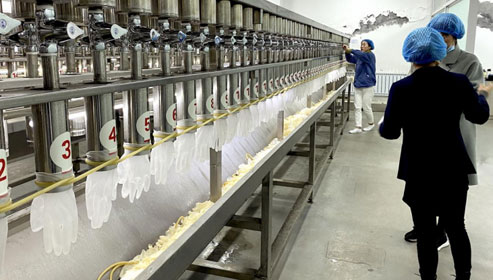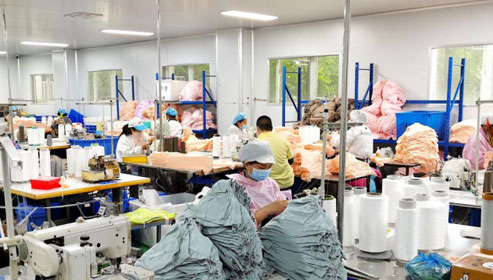Neoprene also called polychloroprene or chloroprene rubber, was developed as an alternative to natural rubber by synthetic polymerization that was resistant to oils. It is stretchable like natural rubber, resistant to water, chemicals, sun damage, tears, abrasion, and puntures. The neoprene glove delivers a various uses in medical and industrial area.
Neoprene gloves are perfect for use in high-risk infectious diseases. The contaminated materials as blood,body fluids and viruses can be high risk for the daily works of medical professionals and researchers. Everyone exposed the contaminated fluids need to be protected by fitted, durable, flexible and chemical-resistant glove. During the wearing time, neoprene gloves prevent any fluids or vapors from leaking or seeping into glove, with a high chemical resistance. And there is no allergy risks caused by gloves. They are ideal for surgical works and laboratory tasks.
Neoprene gloves are also prized for industrial uses, such as constructions, electronics, oil refineries, printing industries, and chemical processing, because they are flame retardant and are resistant to a wide variety of acids, petroleum, bases, oils, alcohols, fuels, peroxides, hydrocarbons, solvents and caustic agents.
Material | Polychloroprene |
Color | Green\Blue\Black\Pink |
Cuff | Beaded |
Glove Length | 240 mm |
Thickness | 0.07-0.14mm (3mil-6mil) |
Weight (M) | 3,5-6g |
Texture | Smooth |
Size | XS, S, M, L, XL |
Latex Free | Yes |
Powder Content | Powder Free |
Grade | Medical |
STERILE/NON-STERILE | Non Sterile |
Both nitrile and neoprene gloves are stretchy synthetic rubbers, they have many similarities, both waterproof, durable, resistant to chemicals of various degrees, and meanwhile they are both latex free, have no possibility to provocate any allergies. However, if you look closely, you can notice they have different structures. Which will lead to differnt functions and various industries with broad applications.
Read through the following our discussion on the differences between nitrile and neoprene gloves, hopely the contents helping you to find out the most suitable rubber glove for your needs.
First of all, the chemical composition of the two gloves are completely different.
Neoprene production comes from chemical polymerization of the chloroprene ( carbon, hydrogen, and chlorine polymer). Because of its component and polymerization processing, neoprene gloves have the following features:
Sunlight, weather, and ozone resistance
Exceptional impact resistance and textile strength
Elastomeric
Flame resistance
Water resistance
Nitrile is on the other hand made from two volatile synthetic liquids, butadiene and acrylonitrile. Acrylonitrile is a man-made colorless liquid chemical with a strong smell, contributes mainly to the elastic properties and resistance. Butadiene is a colorless gas and organic compound. It gives nitrile gloves their flexibility and conformity, allows the glove users to feel tactile sensitivity. In conclusion, nitrile gloves have the following properties:
High Chemical resistance
High water resistance
High Abrasion resistance
Oil and gasoline Resistance
Puncture resistance
Concerning the chemical resistance between neoprene and nitrile gloves, both offers protection against a wide range of contaminants and harmful substances. Specially, nitrile has a superior chemical resistance against fuels, acids, and petroleum-based compounds. It can withstand extended exposure to the majority of concentrated oils.
The both types gloves also have their weaknesses with some chemical mixtures. Neoprene can't stand chlorinated compounds and nitro hydrocarbons, while nitrile gloves react negatively to aromatic oils and ketones.
Neoprene gloves remain chemically inert without distorting during weahter changes, and prolonged exposure to elements.Nitrile is affected by the oxidation process and can be damaged by frequent exposure, unlike neoprene, which has exceptional oxidation resistance. As a result, neoprene gloves are excellent for outdoor physical works.
Overall, the choice between neoprene and nitrile gloves depends on the specific needs of the user, the industy and the application. While nitrile glove is widely used in medical and industrial area beacause of its low cost and excellent strength, durability and hypoallergenic properties, neoprene glove has a more nichy market like for surgical,performing meticulours tasks, and some physical works under extreme weather conditions.
Phone:
E-mail:
Hongkong:


